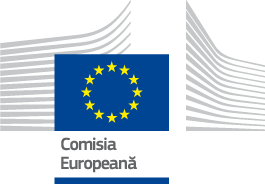

Country Factsheet
In Bulgaria there are nine FLAGs, four inland and five at the Black Sea. Their strategies address several local challenges, including, poor socio-economic conditions in the fisheries areas; low attractiveness of the fisheries areas; low organisational and administrative capacity, as well as the need to decrease economic dependency on fisheries activities. To cope with these challenges, the focus of CLLD is on diversifying activities; promoting social wellbeing and cultural heritage; enhancing and capitalising on environmental assets.
The Republic of Bulgaria is situated in the Eastern Balkan Peninsula, bordering five countries - Greece and Turkey to the south, Macedonia and Serbia to the west, while the Danube defines the border with Romania in the north. The population of Bulgaria is 7.1 million people, and the surface area is 110,994 km2 (0.3% of which is water). The Bulgarian Black Sea coastline is 378 km long. The country has a dense network of about 540 rivers, most of which are relatively small with low water levels. The total length of rivers for inland fishing is 20 231 km, with a water area of 15 000 ha and about 65 different fish species.
The economic importance of the fishing and aquaculture sector is very small compared to the Bulgarian GDP despite the continuous increase in the number of farms and production (in 2014 the sales are around €7,1 Million). The total catches of fish and other marine organisms from commercial fishing in the Black Sea is 8 547 tonnes a year and 143 tonnes from the Danube river (2014).
The Bulgarian Black Sea fishing fleet consists of 2 005 fishing vessels out of which only half are active and operating (2014). 95% of the fishing fleet consists of boats that are 12 metres in length or less and a substantial part of them use gill-nets as their primary fishing tool. The Danube river fishing fleet consists of 1 346 fishing vessels.
At the end of 2014 the total quantity of aquaculture products was 11 207 tonnes from which 9 113 tonnes were for consumption. About 90% of aquaculture production in Bulgaria is cyprinids (mainly carp and herbivorous complex — silver carp and bighead carp, grass carp), trout species (essentially rainbow trout). The only marine aquaculture product in Bulgaria is the Mediterranean mussel, with 45 farms with a total annual production of 2 520 tonnes of which the foremost part is exported. During last years, production of new species as sturgeon and catfish have been introduced.
Between 2007 and 2013 the consumption of fish and fish products increased by nearly 56% (from 4.3kg to 6.7kg per household member).
Contact details of the managing authority can be found here.
More information about national EMFF programmes can be found here.
During the EFF period, Bulgaria had six FLAGs (four on the Black Sea, one along the Danube River and one inland) and spent €19.5 Million in Axis 4 (around €14.6 million from EFF) with a total of 237 projects, creating 411 new jobs with 153 of them employing women.
Types of projects were the following: promotion of local fishery and aquaculture products (82); new tourism products (49); creation or renovation of recreational sites (74), and more than 50 festivals, concerts, exhibitions, fairs, ect. were held.
The final report of the Bulgarian EFF OP is available at the following link (only in Bulgarian).
The main challenges that Community-Led Local Development will have to address in Bulgarian fisheries areas in the coming years are:
To cope with these challenges, the objectives for CLLD in Bulgaria for 2014-2020 are to encourage the economic growth, social inclusion, and job creation within the communities in the coastal regions and the regions of the inland water bodies, which mostly depend on fisheries and aquaculture activities. To this end, the focus will be on:
The number of FLAGs has increased from 6 to 9. Compared to 2007-2013, the total budget for CLLD has been decreased (from 19,5 M€ to €17.8 M€), so the average budget per FLAG is lower (from €3.6 Million to €2.2 Million
The Operational Programme foresees a National Network with a budget of €0.2 Million. The tasks of the NN are:
Click here for the National Network contact details.
| Code | Name | Region | Surface area (km²) | Population | Population density (per km²) | Employment in fisheries* |
|---|---|---|---|---|---|---|
| BG201 | High Western Rhodopes FLAG | 1534 | 25188 | 16 | 77 | |
| BG202 | Pazardzhik FLAG | Pazardzhik |
602 | 40450 | 67 | 46 |
| BG203 | Nessebar - Messemvria FLAG | 420 | 27273 | 65 | ||
| BG204 | Varna & Asparuhovo Area FLAG | 578 | 59575 | 103 | 439 | |
| BG205 | Shabla - Kavarna - Balchik FLAG | 1335 | 38879 | 29 | 383 | |
| BG206 | Bulgarian Black Sea Agreement Byala-Dolni chiflik-Avren | 1004 | 31621 | 31 | 59 | |
| BG207 | Pomorie FLAG | 413 | 27399 | 66 | 225 | |
| BG208 | Burgas-Kameno FLAG | Burgas |
553 | 67187 | 129 | 1012 |
| BG209 | FLAG Samokov | 1210 | 35871 | 34 | 48 |